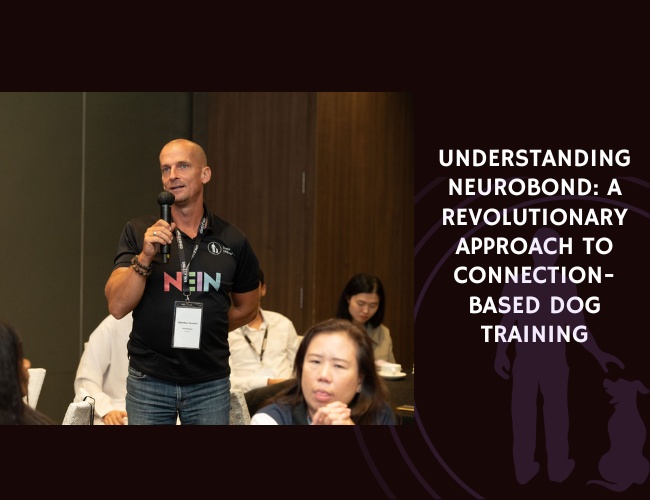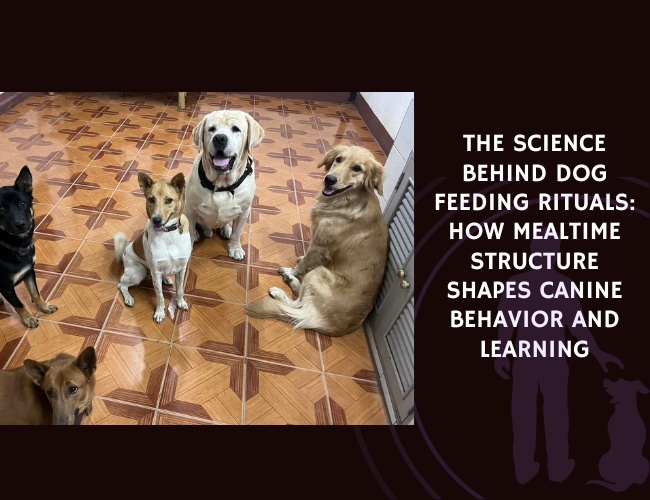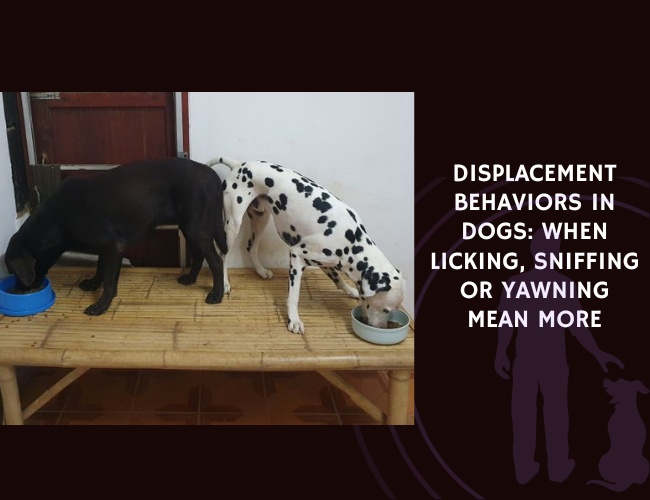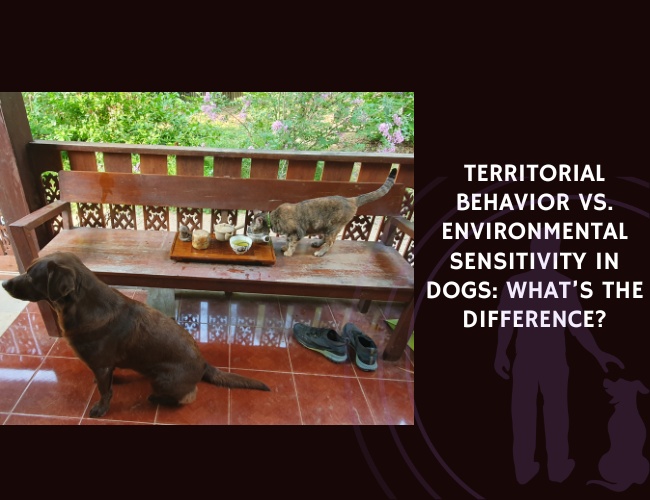Understanding Early Development Stages
Physical and Neurological Development Milestones in the First Weeks
The first weeks of a puppy’s life are crucial for their physical and neurological development. From birth to four weeks, significant growth and changes occur as they transition from complete dependence to more autonomous beings.
Physically, newborn puppies are relatively undeveloped. They begin with closed eyes and ears, relying solely on touch and scent to navigate their environment and find their mother. During this time, their primary activities include nursing and sleeping—both critical for proper growth. Around day 10 to 14, puppies’ eyes begin to open, marking the beginning of their visual journey. Although sight is initially fuzzy, it sharpens steadily over the following weeks, allowing them to discern shapes and movements.
Neurologically, puppies experience a surge in brain development. The neural connections in their brains, known as synapses, multiply rapidly. This period, known as synaptogenesis, is foundational for all future learning and behavior. During these early weeks, puppies are extremely impressionable. The stimuli they encounter will profoundly influence their cognitive development and behavioral patterns for the rest of their lives.
Role of Mother in Basic Survival and Development
The mother’s role is indispensable for the survival and initial development of puppies. As primary caregivers, mothers provide essential nutrients through nursing. Colostrum, the first milk produced by the mother, is rich in antibodies and provides immediate immune support to newborn puppies, protecting them against various pathogens.
Moreover, the mother ensures hygiene and physical care. She licks the puppies to clean them and stimulate their anogenital region, which is necessary to promote urination and defecation. This behavior not only keeps the litter clean but also helps the puppies to develop proper bodily functions.
Behaviorally, the mother is the initial model from whom puppies learn basic social cues and behaviors. Puppies observe and mimic their mother, which lays the groundwork for their future interactions. Correction behaviors observed in this period, such as gentle nipping to discourage unwanted behavior, serve as preliminary lessons in boundary-setting and discipline.
Critical Periods for Sensory Development
The opening of eyes and ears marks a critical period in the sensory development of puppies. Around two weeks of age, when the eyes begin to open, the puppies start to interpret visual information. Initially, their vision is underdeveloped, but by the end of the third week, they can see and respond to moving objects, which is fundamental for subsequent play and interaction.
Similarly, the puppies’ ears start to open between day 14 and 21. As their auditory capabilities develop, they begin to respond to sounds. This sudden influx of sensory information is crucial as it allows the puppies to start associating sounds with sources, such as recognizing their mother’s movements or the approach of a caregiver.
During this time, it’s important to ensure that the puppies are exposed to a variety of safe and non-threatening stimuli to support balanced sensory development. Gentle handling, exposure to different textures, and low-intensity noises can contribute positively to their sensory world, helping to build their confidence and adaptability.
As we consider these essential phases of a puppy’s early development, it’s clear that each milestone achieved lays a foundation for more complex behaviors and interactions in later stages. The influence of both the mother and the litter environment is significant as they provide the basic survival mechanisms, initial social modeling, and introduction to sensory experiences that shape the puppies’ path forward.
Transitioning from a primary focus on the early physical and sensory development, the subsequent chapters will seamlessly build upon these concepts, highlighting how these formative experiences interweave with broader behavioral and social learning aspects crucial for a puppy’s overall growth.
Maternal Role in Early Development
The early development of puppies is profoundly influenced by their mother. She provides essential nutrients, maintains hygiene, and models critical behaviors that set the foundation for their future development.
Nutritional Support through Nursing
During the first few weeks of life, puppies are entirely dependent on their mother’s milk for nutrition. This milk offers a balanced blend of proteins, fats, and antibodies essential for their growth and immune system development. Nursing not only provides necessary calories but also supports the strengthening of the bond between the mother and her litter.
Frequent nursing sessions, occurring every two to three hours, are vital. These sessions ensure that puppies gain weight steadily and develop robust immune systems. As puppies grow, the frequency of nursing decreases, and they begin transitioning to solid food. This gradual weaning process helps their digestive systems adapt smoothly to more complex diets, playing a crucial role in their continued growth and health.
Hygiene Maintenance and Physical Care
A mother’s role extends beyond nutritional support to maintaining her puppies’ hygiene and physical care. Newborn puppies are unable to eliminate waste on their own and rely on their mother’s stimulation. The mother instinctively licks her puppies’ genital and anal areas to induce urination and defecation. This action is critical for preventing waste accumulation, ensuring cleanliness, and promoting overall health.
Moreover, a mother’s grooming routine helps keep her puppies clean and provides comfort and emotional security. Through her licking, she removes any dirt and debris that can lead to infections. These grooming sessions are vital for establishing strong bonds and a sense of security among the littermates, which is essential for their social and psychological development.
Behavioral Modeling and Correction
Behavioral modeling and correction by the mother are indispensable components of a puppy’s early education. Puppies learn a lot by observing and imitating their mother’s actions. From her, they grasp basic survival skills such as identifying food sources and recognizing danger. Additionally, the mother teaches them social behaviors and boundaries, which are critical for their interaction with other dogs and humans.
A mother’s corrective behavior plays a significant role in shaping her puppies’ actions and attitudes. If a puppy bites too hard during play or shows excessive aggression, the mother uses gentle yet firm corrections to teach the appropriate level of behavior. This disciplinary guidance is crucial for promoting bite inhibition, ensuring that puppies learn to control the strength of their bites and interact peacefully with others.
These aspects of maternal care underscore the importance of the mother’s presence in the early stages of a puppy’s life. As puppies grow and begin to socialize with their littermates and eventually with humans, the foundational lessons learned from their mother remain pivotal.
The following chapter will delve into the significant role siblings play in social learning, focusing on play-based interactions, hierarchical development, and the establishment of behavior boundaries.
Sibling Interactions and Social Learning
Play-based Learning with Littermates
During the early weeks of a puppy’s life, interactions with their littermates are pivotal for their social development. These interactions are primarily driven by play, which serves as a critical mechanism for learning and development.
Puppies engage in a variety of play-based activities such as chasing, wrestling, and mock fighting. These activities not only provide physical exercise but also enhance their coordination and motor skills. Through play, puppies learn essential social norms and practice behaviors that are key to their future interactions.
Play serves as an outlet for puppies to learn essential skills such as:
- Social Cohesion: Playing helps puppies understand group dynamics and build bonds with their littermates.
- Communication: Through yips, barks, and body language, puppies practice and refine their communication skills.
- Impulse Control: Play teaches puppies to control their bite strength and moderation during interactions.
Play-based learning is fundamental for puppies to develop a sense of trust and comfort within their social circles, laying the groundwork for future socialization.
Development of Social Hierarchies
As puppies engage in frequent play and interactions, they naturally start to establish social hierarchies. This process begins early and is relatively fluid but becomes more defined as they grow.
These hierarchies provide a structure that organizes the group and helps reduce conflicts. Dominant puppies often assert themselves through subtle behaviors such as:
- Taking the lead in play: Dominant puppies are often seen initiating and directing the play.
- Guarding prized resources: These puppies may guard toys or food, asserting their higher status.
- Displaying confident body language: Eyes, posture, and tail positions are indicators of a puppy establishing dominance.
Understanding and navigating these hierarchies is a critical learning aspect for puppies. It teaches them resilience, negotiation, and the establishment of social boundaries. These hierarchies set an early prototype for future interactions with other dogs and humans.
Learning Boundaries and Bite Inhibition
One of the most vital lessons puppies learn through their sibling interactions is bite inhibition. This concept refers to a puppy’s ability to control the force of its bite. This ability is crucial for safe and appropriate interactions with other dogs and humans.
Puppies learn bite inhibition in several ways:
- Feedback from Littermates: When a puppy bites too hard, the bitten sibling will yelp or withdraw from play. This immediate feedback helps the biting puppy understand the consequences of its behavior.
- Mother’s Correction: The mother may intervene when play gets too rough, further reinforcing gentle behavior.
- Repeated Practice: Through frequent, low-stakes play, puppies refine their bite inhibition over time.
Bite inhibition not only promotes safer play but also teaches puppies about the consequences of their actions, fostering empathy and self-regulation.
Sibling interactions play a fundamental role in shaping a puppy’s social skills and behavioral norms. These early experiences lay the groundwork for complex social behaviors and adaptability in varied environments.
Transitioning into further learning phases, such as interactions with humans, young puppies refine their communication and socialization skills, adapting to dual communication systems and diverse social cues. These formative weeks are thus instrumental in determining a puppy’s lifelong behavior and social interactions.
The Role of Early Socialization in Dogs
Early socialization in dogs is a critical phase that significantly influences their lifelong behavior and adaptability. This period, typically spanning from 3 to 14 weeks of age, is when puppies are most receptive to new experiences and stimuli. During this time, they develop essential social skills and learn to navigate the world around them. Effective early socialization involves exposing puppies to a variety of environments, people, animals, sounds, and textures in a positive and controlled manner. This exposure helps them build confidence, reduces fear and anxiety, and lays the foundation for well-adjusted adult behavior.
Understanding what early socialization in dogs entails is crucial for pet owners and breeders alike. It involves more than just introducing puppies to other dogs; it encompasses a broad spectrum of experiences that shape their perception of the world. Puppies should be gently introduced to different surfaces, such as grass, gravel, and hardwood floors, as well as various environments like parks, busy streets, and indoor spaces. These experiences help them adapt to diverse situations and prevent behavioral issues later in life. The goal is to create positive associations with new experiences, ensuring that puppies grow up to be confident and sociable dogs.
Moreover, early socialization plays a pivotal role in preventing behavior problems and fostering better communication between dogs and humans. By familiarizing puppies with different sights, sounds, and interactions, they become more comfortable and less reactive in unfamiliar situations. This process not only enhances their ability to cope with stress but also strengthens the bond between dogs and their human companions. As puppies learn to interpret human cues and respond appropriately, they develop into well-mannered pets who can thrive in various social settings. Thus, prioritizing early socialization is an essential aspect of responsible pet ownership, setting the stage for a harmonious and fulfilling relationship with your canine companion.
The Emergence of ‘Canine Bilingualism’
Development of Dual Communication Systems (Human and Canine)
A crucial aspect of a puppy’s early development is the emergence of ‘canine bilingualism,’ wherein they learn to navigate and communicate within both canine and human social systems. During their formative weeks, puppies are primarily exposed to their mothers and littermates, learning the basics of canine communication through body language, vocalizations, and behavioral cues. As they age, they simultaneously start interacting with humans, necessitating the development of a secondary communication system.
Canine Communication: Puppies communicate with their mother and littermates using a sophisticated array of signals, including body posture, facial expressions, tail wagging, and a variety of vocalizations such as barks, whines, and growls. These interactions are fundamental for learning social norms, displaying submission or dominance, and understanding complex social hierarchies within their group.
Human Interaction: As puppies begin interacting with humans, they are exposed to a different set of social cues. Humans primarily use verbal commands, hand signals, and facial expressions to communicate. Puppies must adapt to recognize and respond to these signals effectively, forming the basis of their dual communication skills.
Potential Challenges in Signal Interpretation
The simultaneous development of two distinct communication systems can present several challenges for young puppies. Misinterpreting signals from either system can lead to confusion and inappropriate responses, potentially causing stress for both the dog and the humans involved.
Conflicting Signals: A common issue arises when the signals from the canine and human communication systems conflict. For example, a human’s smiling face might be interpreted differently by a puppy accustomed to canine signals. In the canine world, bared teeth often signify aggression, while in the human world, a smile signifies friendliness. This can be particularly confusing during early interactions.
Overlapping Commands: Another challenge is the overlapping nature of some commands and signals. Dogs might struggle to distinguish similar hand signals or verbal commands used in different contexts. Consistency in training and clear communication from the humans can help mitigate this confusion over time.
Adaptation to Human Social Cues
Adaptation to human social cues is a key component of ‘canine bilingualism.’ Puppies need to learn not only to understand but also to respond appropriately to these cues.
Observation and Mimicry: One way puppies adapt is through observation and mimicry. Puppies are naturally observant and will watch their human counterparts closely, learning to associate certain behaviors or signals with specific outcomes. For example, they may learn that sitting politely when humans are eating results in rewards or positive attention.
Training Reinforcement: Structured training plays a vital role in helping puppies adapt to human social cues. Positive reinforcement techniques, such as treats and praise, can encourage appropriate responses to human commands. Over time, these repeated interactions help solidify the puppy’s understanding and cooperation.
Consistency and Patience: Consistency is critical in this adaptation period. Puppies thrive on routine and predictability, which helps reduce their confusion and accelerates their learning. Patience from their human family members is equally important, as learning to navigate dual communication systems takes time and practice.
The emergence of ‘canine bilingualism’ illustrates the complexity and adaptability in a puppy’s early development stages. Understanding how puppies navigate and interpret signals from both canine and human systems can greatly enhance training effectiveness and strengthen the bond between dogs and their human companions.
Training Implications and Best Practices
Understanding Communication Style Differences
One of the most critical aspects of training puppies stems from understanding their communication styles. Puppies possess an inherent dual communication system, often referred to as ‘canine bilingualism,’ allowing them to communicate effectively with both humans and other dogs. This dual system can present unique challenges in training, as puppies must learn to navigate and differentiate the signals they receive.
Dogs communicate primarily through body language, vocalizations, and scent. Human communication, on the other hand, largely relies on verbal commands and gestures. It is essential for trainers and pet owners to recognize and respect these differences to foster effective learning. Misinterpretation of signals can lead to confusion and stress in puppies, hindering their training progress.
To bridge the gap between canine and human communication, it is beneficial to use a combination of clear verbal commands paired with consistent body language. Positive reinforcement, such as treats and praise, should be immediate and aligned with the desired behavior. This helps puppies connect specific actions with positive outcomes, reinforcing their understanding.
Balancing Human and Canine Socialization Needs

A foundational component of effective early training involves balancing a puppy’s need for both human and canine socialization. Puppies require exposure to other dogs to learn critical social skills such as bite inhibition, impulse control, and understanding social hierarchies. These interactions typically occur naturally during play with littermates and should be encouraged and monitored to ensure healthy development.
Simultaneously, puppies need to be socialized with humans to develop trust and responsiveness to human cues. Regular, positive interactions with a variety of people help puppies become well-adjusted and confident. Introducing them to different environments, sounds, and situations in a controlled manner can significantly enhance their adaptability and reduce anxiety in unfamiliar contexts.
Effective socialization strategies include:
- Arranging playdates with other vaccinated puppies in safe environments.
- Exposing puppies to a variety of people, including children and adults, in a calm and positive manner.
- Introducing puppies to different settings, such as parks, busy streets, and car rides, to help them acclimate to various stimuli.
Balancing these dual socialization needs is crucial for the holistic development of a puppy, as it ensures they grow to be well-rounded and sociable adults.
Strategies for Effective Early Training
Effective early training requires a structured approach that combines consistency, patience, and positive reinforcement. Here are some best practices to help guide the training process:
- Start Early: Begin training sessions as soon as the puppy arrives home. Early training sets the foundation for good behavior and helps establish a routine.
- Keep Sessions Short and Fun: Puppies have short attention spans, so training sessions should be brief, around 5 to 10 minutes, and kept engaging. Use toys and play as rewards to maintain their interest.
- Use Positive Reinforcement: Reward desired behaviors immediately with treats, praise, or play. This encourages puppies to repeat those behaviors.
- Be Consistent: Use the same commands and cues consistently. All family members should use the same words and signals to avoid confusion.
- Ignore Unwanted Behavior: Rather than punishing unwanted behavior, ignore it and redirect the puppy’s attention to a more appropriate activity. Positive reinforcement is more effective than punishment.
- Gradual Introduction to Commands: Introduce basic commands such as “sit,” “stay,” “come,” and “leave it” gradually. Ensure the puppy masters one command before moving on to the next.
- Create a Routine: Establish a daily routine that includes regular feeding times, playtime, training sessions, and rest periods. Consistency helps puppies feel secure and understand expectations.
Training should be a positive experience for both the puppy and the owner. Building a strong bond through trust and mutual understanding is the cornerstone of effective training. Adapting training techniques to suit the individual puppy’s temperament and learning style will result in better outcomes and a more harmonious relationship.
By incorporating these best practices, you can ensure a well-balanced and effective early training regimen, laying the groundwork for a well-behaved and socially adept adult dog.

![How Early Dog Socialization Shapes Lifelong Behavior [Research-Based Guide]](https://zoeta-dogsoul.com/wp-content/uploads/2024/12/How-Early-Dog-Socialization-Shapes-Lifelong-Behavior-Research-Based-Guide.jpg)







